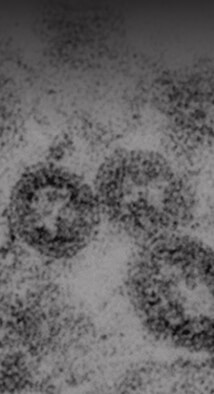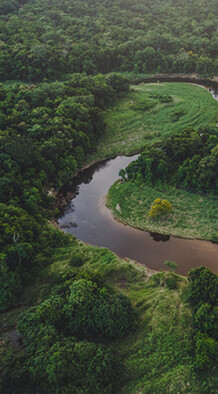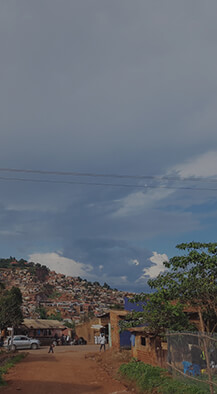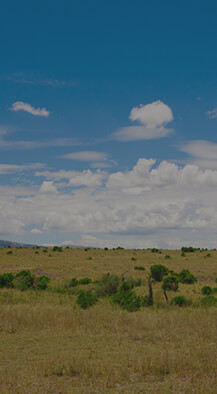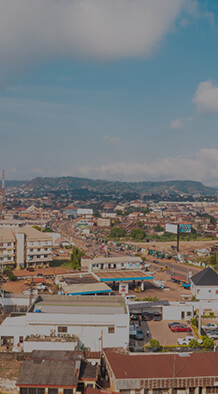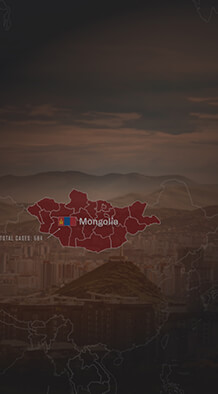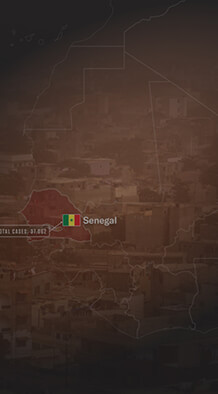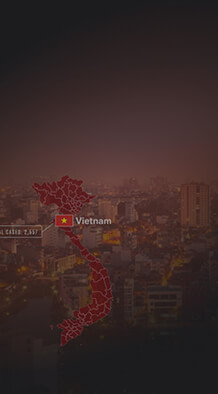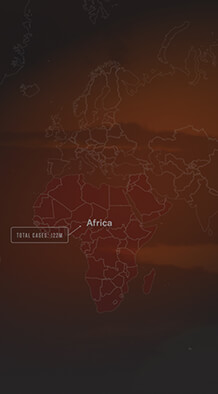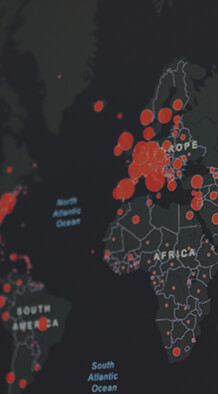COVID-19

Case Study:
COVID-19 in
Mongolia
Cases Overview*
- 1M Total Cases
- 0 Total Vaccines Administered
- 2.1K Deaths
By January 30, 2021—one year after WHO declared a Public Health Emergency of International Concern—Mongolia had fewer than 1,800 cases of COVID-19 and just two deaths, despite sharing the world’s longest land border with China. The country was able to mount a strong initial response to prevent the spread of COVID-19 by taking action quickly, starting with a mask order the day after the novel coronavirus was identified.
ABOUT SARS-COV-2
On December 31, 2019, a statement from the Wuhan Municipal Health Commission describing cases of pneumonia caused by an unknown virus was reported to the World Health Organization office in China.1 By April 2021, COVID-19, the disease caused by SARS-CoV-2, had killed more than 3 million people and infected at least 140 million worldwide.2
SARS-CoV-2 is a novel coronavirus. Coronaviruses were identified as a cause of the common cold in humans in the 1960s but were not considered a threat to public health. While colds can sometimes cause severe illness in infants and the elderly, they did not generally pose a great danger to the general population. That changed with the emergence of severe acute respiratory syndrome (SARS) in 2002 and Middle East respiratory syndrome (MERS) in 2012, both caused by new human coronaviruses that are more lethal and can cause severe illness in normally healthy people.3
By March 11, 2020, WHO had declared COVID-19 a global pandemic, prompting extreme lockdown measures and travel restrictions as the deadly disease spread all over the world. As humans had not yet encountered COVID-19, there was no natural immunity or established care protocols, and governments relied on public health and social measures such as quarantines, mask use and physical distancing to slow the spread while the scientific community rushed to develop treatments and vaccines.
Scientists were able to develop vaccines to protect against COVID-19 in less than a year. Typically, vaccine development takes five to 10 years.4 Doctors have also learned to better manage patient care, which in some areas has improved life expectancy. Still, there is no cure for COVID-19, and it may take years for vaccines to reach the global population. While countries work to address major hurdles to equitable distribution of vaccines, continued public health measures are still needed to save lives.
Disclaimer: These stories showcase various countries that executed preparedness plans to mount a strong initial response to COVID-19. As the pandemic stretches on and tests the capacities of all countries’ response efforts, increased cases, deaths and response missteps may still occur.
WHAT HAPPENED
Along with the rest of the world, Mongolia found out about the spread of what was later discovered to be SARS-CoV-2 in China on New Year’s Eve of 2019. The seriousness of the outbreak quickly became apparent to officials in Mongolia. Extensive commercial contact and air travel between the two countries posed a serious threat. Officials also recognized that even a relatively modest outbreak could overwhelm their health system, and that the limited supply of ventilators could not support a large number of patients.5
THE RESPONSE
On January 9, the World Health Organization (WHO) announced that the cause of the viral pneumonia was a novel coronavirus.6 The very next day, while many governments waited, Mongolia issued an advisory for all Mongolians to wear masks.7 Within six weeks, public transport and other services were only available to those wearing masks. Officials also activated a State Emergency Committee based on a 2017 emergency preparedness law to coordinate the national response, well in advance of WHO’s declaration of a public health emergency.8
As the global situation rapidly worsened in January and more countries reported cases, Mongolia was quickly stepping up its control measures, restricting travel from China and isolating those traveling from countries with COVID-19 cases. Before any cases were confirmed, Mongolia cancelled celebrations of the Lunar New Year—Tsagaan Sar, the country’s most important annual holiday—in late February. Travel across the country was restricted during the holiday, and again after the first domestic case of COVID-19 was detected on March 10, which also led to a closure of most businesses. Officials used broadcast television to replace in-person primary school instruction and switched to online education for universities.9

Key Preparedness Factors
-
Risk Assessment & Planning
-
Emergency Response Operations
-
National Laboratory System
-
Disease Surveillance
-
National Legislation Policy & Financing
-
Human Resources
-
Risk Communications
Mongolia’s leaders kept the public informed via text messages and daily updates to the nation on all broadcast media; clear and accurate information came from one source, eliminating undue confusion. Other response measures included an extensive contact tracing system, quarantining and testing all travelers, random community testing, walk-up testing clinics and the creation of isolation and quarantine camps—all set up in the month of February, before the country’s first case. The camps were created as it was not possible for many to quarantine at home. Those suspected of having COVID-19 and those who had been close contacts with confirmed COVID-19 cases were required to stay in the camps for monitoring. All COVID-related health care was provided free of charge, apart from charges for meals.10
The risk-based early response efforts prepared the country to suppress potential outbreaks. In early March, a French national was found to have broken his quarantine and subsequently tested positive for the virus after showing symptoms of COVID-19. From the announcement of his positive test on March 10, it took only six days for all 181 of the patient’s contacts to be traced, tested and quarantined.11
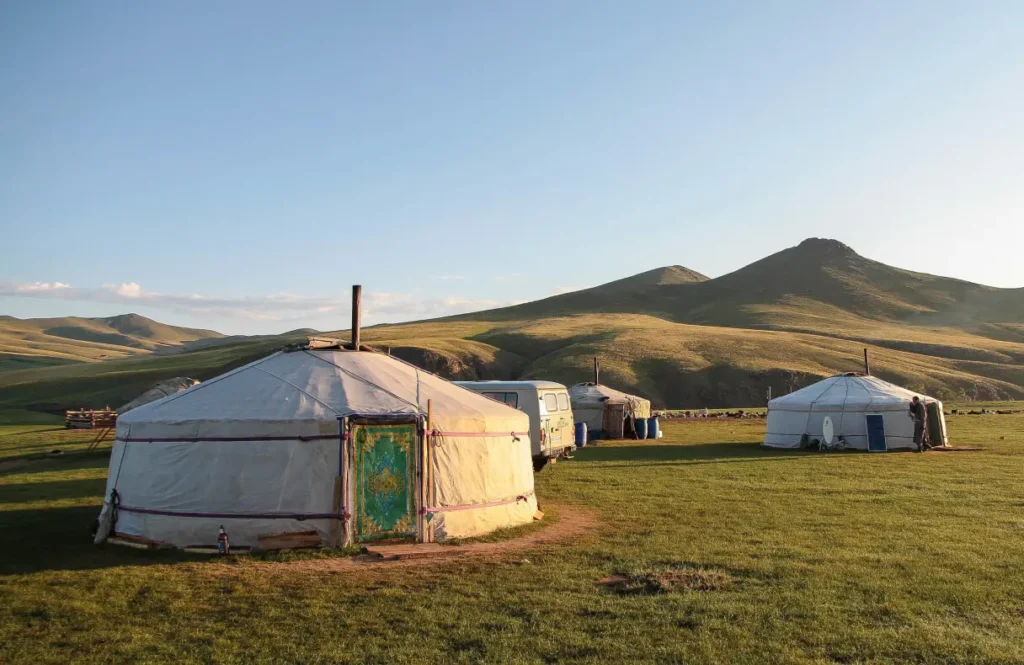
Here’s the thing: we don’t actually have a great public health system. That’s why our administrators were so afraid of COVID-19. We don’t have many respirators, for example.
Davaadorj Rendoo, epidemiologist at the National Center for Public Health of Mongolia, as quoted in Technology Review
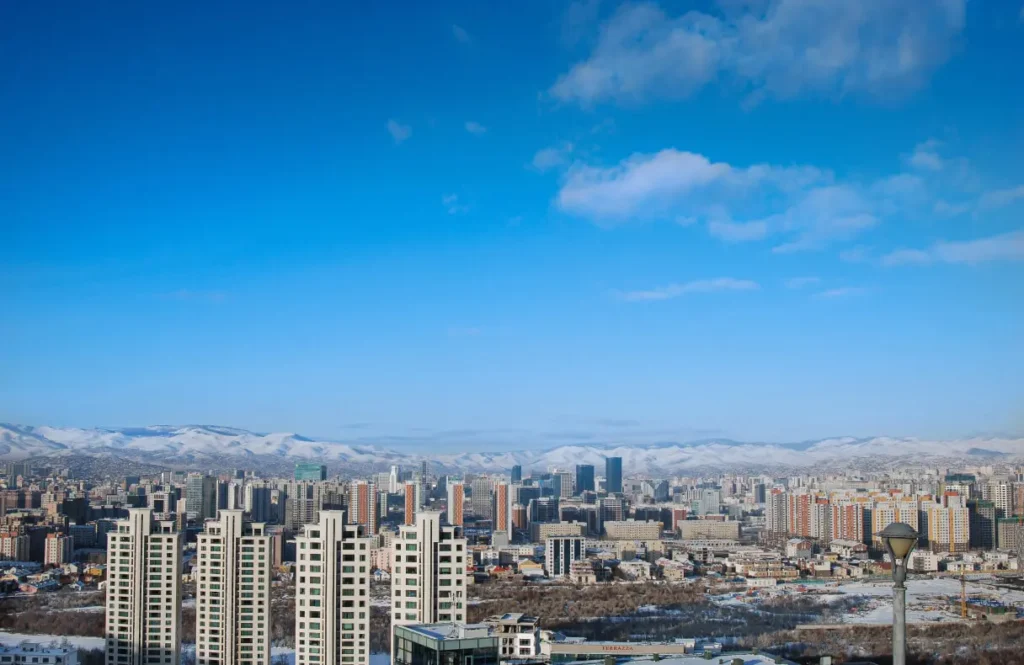
Strict control of disease outbreaks can have negative social and economic impacts, and Mongolia has been criticized for not always striking the correct balance, with particular concerns about restrictions of civil liberties. These frustrations led to protests that prompted the resignation of many Mongolian leaders, including the prime minister, in early 2021.13, 14
Although the response has faced difficulties, Mongolia’s immediate actions to address the outbreak including recommending masks, setting up facilities for quarantine and isolation, scaling up hospital capabilities, creating a robust contact tracing system and scaling up testing—all in the first months of the outbreak— have helped the country to avoid widespread cases and, critically, to record only two deaths as of January 30, 2021—one year after WHO declared a Public Health Emergency of International Concern.15
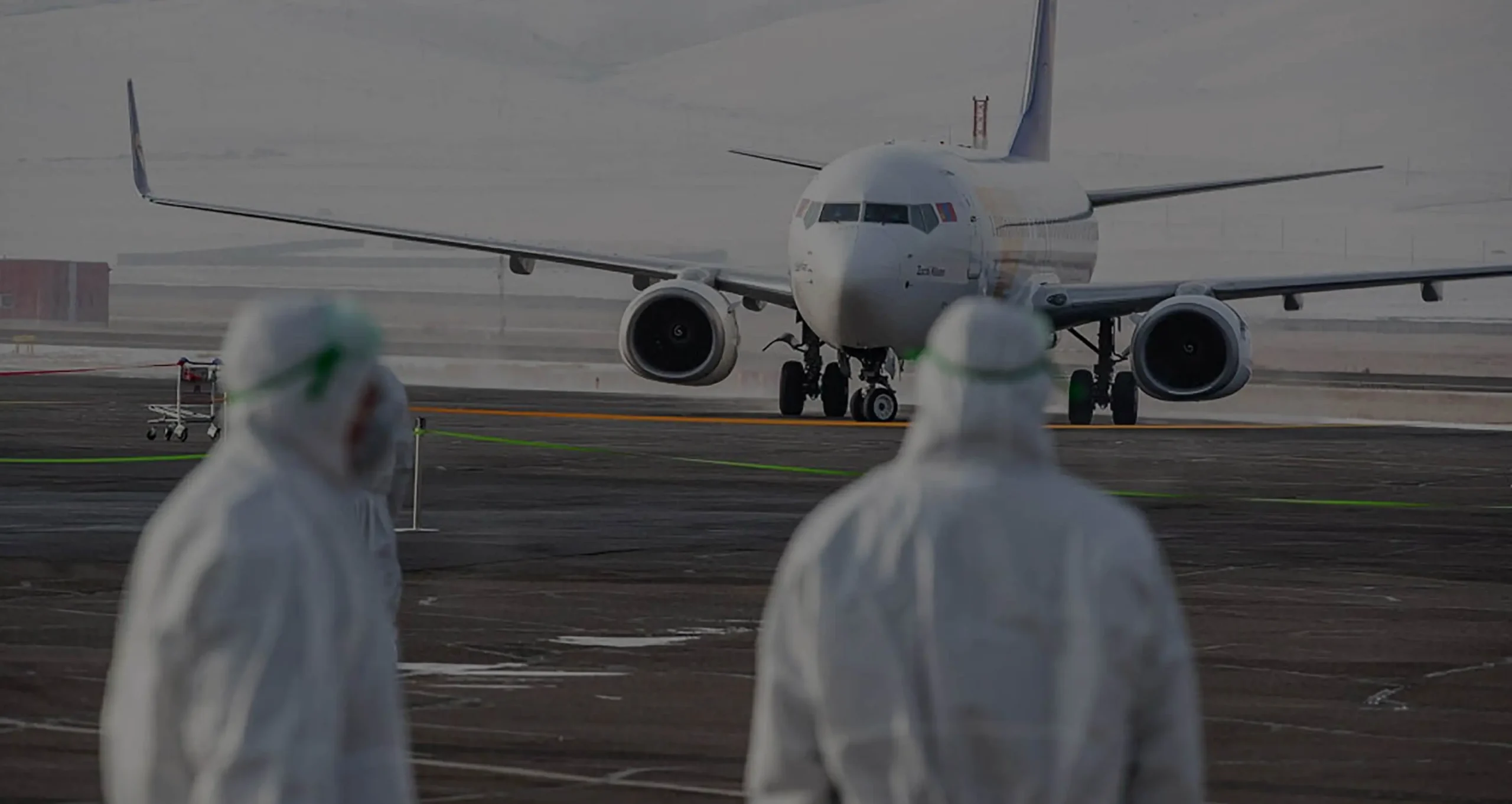
We don’t know how long the state of emergency will last....We cannot take anything for granted.
Davaadorj Rendoo, epidemiologist at the National Center for Public Health of Mongolia, as quoted in Technology Review
*Compiled from the COVID-19 Dashboard by the Center for Systems Science and Engineering at Johns Hopkins University
References
- World Health Organization. (2020a). Timeline: WHO’s COVID-19 response. https://www.who.int/emergencies/diseases/novel-coronavirus-2019/interactive-timeline
- The New York Times. (2021, March 15). Coronavirus World Map: Tracking the Global Outbreak. The New York Times. https://www.nytimes.com/interactive/2020/world/coronavirus-maps.html
- Cui, J., Li, F., & Shi, Z. (2018, December 10). Origin and evolution of pathogenic coronaviruses. Nature Reviews Microbiology. https://www.nature.com/articles/s41579-018-0118-9
- Johns Hopkins Coronavirus Resource Center. (n.d.). Vaccine Research & Development. https://coronavirus.jhu.edu/vaccines/timeline
- Varagur, K. (2020, August 19). How Mongolia has kept the coronavirus at bay. MIT Technology Review. https://www.technologyreview.com/2020/08/18/1007135/mongolia-coronavirus/
- World Health Organization. (2020a). Timeline: WHO’s COVID-19 response. https://www.who.int/emergencies/diseases/novel-coronavirus-2019/interactive-timeline
- Jargalsaikhan, M. (2020, April 20). Mongolia’s Effective ‘Analogue’ Approach to COVID-19 Containment. Asia Pacific Foundation of Canada. https://www.asiapacific.ca/publication/mongolias-effective-analogue-approach-covid-19-containment
- Varagur, K. (2020, August 19). How Mongolia has kept the coronavirus at bay. MIT Technology Review. https://www.technologyreview.com/2020/08/18/1007135/mongolia-coronavirus/
- Erkhembayar, R., Dickinson, E., Badarch, D., Narula, I., Warburton, D., Thomas, G. N., Ochir, C., & Manaseki-Holland, S. (2020). Early policy actions and emergency response to the COVID-19 pandemic in Mongolia: experiences and challenges. The Lancet Global Health, 8(9), e1234–e1241. https://www.thelancet.com/journals/langlo/article/PIIS2214-109X(20)30295-3/fulltext
- Erkhembayar, R., Dickinson, E., Badarch, D., Narula, I., Warburton, D., Thomas, G. N., Ochir, C., & Manaseki-Holland, S. (2020). Early policy actions and emergency response to the COVID-19 pandemic in Mongolia: experiences and challenges. The Lancet Global Health, 8(9), e1234–e1241. https://www.thelancet.com/journals/langlo/article/PIIS2214-109X(20)30295-3/fulltext
- Erkhembayar, R., Dickinson, E., Badarch, D., Narula, I., Warburton, D., Thomas, G. N., Ochir, C., & Manaseki-Holland, S. (2020). Early policy actions and emergency response to the COVID-19 pandemic in Mongolia: experiences and challenges. The Lancet Global Health, 8(9), e1234–e1241. https://www.thelancet.com/journals/langlo/article/PIIS2214-109X(20)30295-3/fulltext
- Bhatia, G., Dutta, P. K., & McClure, J. (2021, March 15). Mongolia: the latest coronavirus counts, charts and maps. Reuters. https://graphics.reuters.com/world-coronavirus-tracker-and-maps/countries-and-territories/mongolia/
- Reuters. (2021, January 21). Mongolian prime minister submits resignation after COVID-19 protests. https://www.reuters.com/article/us-health-coronavirus-mongolia-idUSKBN29Q1GT
- France 24. (2021, January 21). Mongolians protest at virus curbs after row over mother’s treatment. https://www.france24.com/en/live-news/20210121-mongolians-protest-at-virus-curbs-after-row-over-mother-s-treatment
- Statista. (2021, March 15). COVID-19 deaths worldwide per million population as of March 15, 2021, by country. https://www.statista.com/statistics/1104709/coronavirus-deaths-worldwide-per-million-inhabitants/
